As a chicken keeper in your own yard, you want your birds to feel safe in their coop and run. But some chickens really want to be free and will fly or flutter over fences to get away. Clipping your chicken’s wings is an easy and safe way to keep them from running away.
At first, cutting a chicken’s wings might sound scary, but it’s actually pretty easy once you know how to do it right. To help you learn how to quickly and correctly clip your chicken’s wings, we will go over the whole process in this article.
Why Clip a Chicken’s Wings?
Here are some of the main reasons for clipping chicken wings:
-
To prevent escape artist chickens from flying out of their enclosure. Some breeds like bantams can fly up to 8 feet in the air!
-
To protect chickens from getting into danger outside their coop, like traffic, predators, etc.
-
To stop chickens from invading your vegetable garden or flower beds and making a mess.
-
To avoid chickens wandering into neighbor’s yards and causing problems.
By cutting off their wings, you can limit their ability to fly far or high in a humane way. They can still fly up to roosts or short distances without any problems.
What You’ll Need
Clipping chicken wings is easy to do at home with just a few supplies:
-
Sharp, clean scissors or pruning shears
-
A towel or thick gloves for handling the chicken
-
Styptic powder, corn starch or flour (optional to stop bleeding)
-
An extra person to help hold the chicken (optional)
Choosing the Right Time
You’ll want to wait until your chickens are fully grown before clipping their wings, around 5-6 months old. Avoid clipping wings when chickens are molting, as they will be growing new feathers.
Keep an eye out for blood inside the feather shafts. This means that the pin feathers should not be cut. Only clip fully formed feathers lacking blood supply.
Step-By-Step Guide
Follow these steps for properly clipping your chicken’s wings:
Catch and Secure the Chicken
This first step tends to be the hardest part! Chickens dislike being caught and will likely run away. Try cornering them before swooping in quickly to grab the chicken. Brief inversion may calm the chicken once caught.
Have a helper hold the chicken steady in their lap or under their arm during the clipping process. Make sure to restrain both wings.
Identify the Primary Flight Feathers
Locate the long primary feathers at the tip of the wing on one side. The 10-12 primary feathers are longest and responsible for flight.
Gently pull the wing straight out to extend it fully. Ensure you are clipping the correct feathers by consulting a wing clipping diagram.
Cut the Primary Feathers
Place your scissors perpendicular to the wing at the desired cutting line. Usually cutting off the primary feathers halfway down the length of the feather is sufficient.
In one quick, straight cut, trim across all primary feathers to shorten them significantly. Avoid cutting any feathers still growing or bloody.
Release the Chicken
Let go of the chicken once you’ve finished the clipping procedure. They may be slightly disoriented at first. But the wing clipping should not hurt them.
Monitor their flight ability afterwards. You can always trim more if needed for chickens that persist in escaping. Generally just one wing must be clipped.
Clipping Only One Wing
Most chicken owners find it effective to just clip the primary feathers on one wing rather than both sides. This preserves some flight ability while still inhibiting high or long distance flight.
Altering lift and balance by clipping one wing causes the chicken to have to work harder to fly up, veering sideways and limiting control. So they are very unlikely to clear fences or trees successfully.
Aftercare Tips
It’s normal for a chicken to be a little confused and off-balance immediately after clipping their wing. But they soon adapt and go about normal chicken life, just unable to fly far.
Watch for signs of bleeding and treat with styptic powder or pressure if necessary. Monitor the clipped feathers as they will regrow during the next molt in a few months.
Make sure to redo the wing clipping procedure about 1-2 times per year as feathers regrow. This will prevent your sneaky chickens from regaining flight again!
Is Clipping Cruel?
Overall, gently clipping a chicken’s primary wing feathers is not considered inhumane. As long as you avoid cutting growing feathers, it should not hurt them.
Chickens can still flap up to perches, forage, socialize, and do all their usual chicken activities with clipped wings. Caution is still needed to protect them from predators. But clipping can help keep them safely in their coop and run.
Learning how to clip your chicken’s wings is an important skill for any backyard chicken keeper dealing with escape artist birds. Following these simple steps, you can quickly and correctly clip your flock’s wings to restrict flight and keep them safe. Just be sure to avoid cutting any bloody feathers and monitor the chickens afterwards. Done properly, wing clipping is a safe and effective technique for chicken containment.
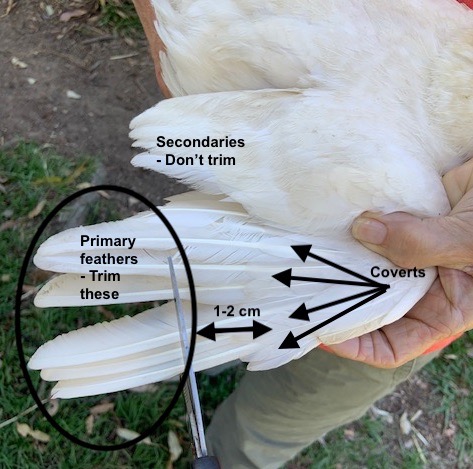
Introduction: Clipping Chicken Wings
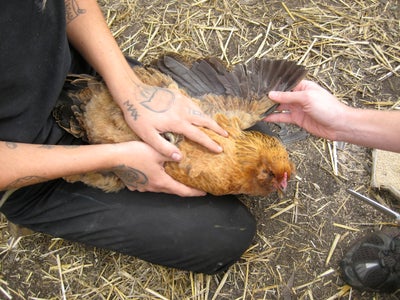
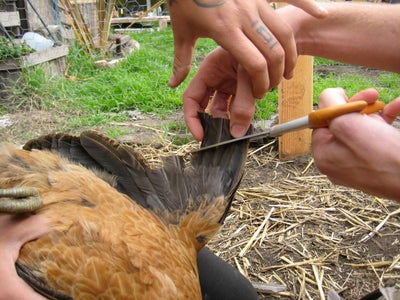
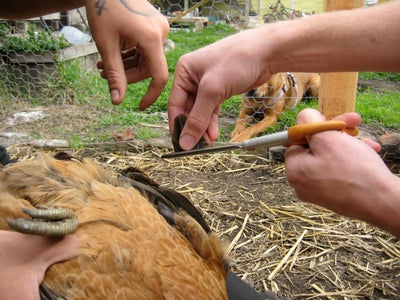
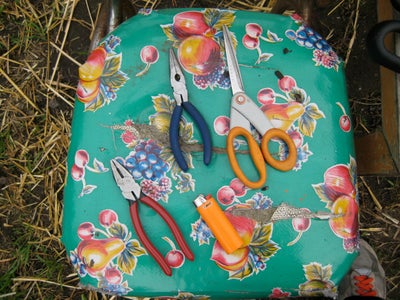
- Clean pair of sharp scissors
- Towel (optional)
- Pliers (optional safety measure)
- Corn Starch (optional safety measure)
- Gauze or rag (optional safety measure)
Step 3: Expose the Wing
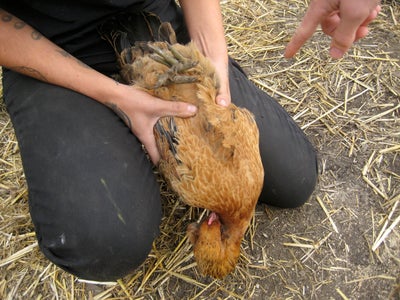
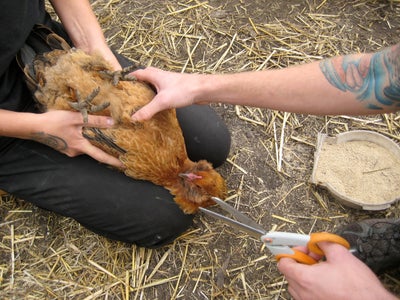
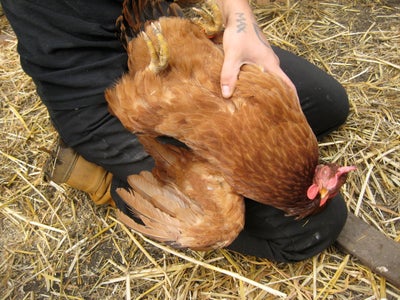
How to Clip your Chickens Wings (Safe and painless) (Easy to do)
FAQ
Is it better to clip one or both chicken wings?
Many people find success by clipping just one wing. Others clip both wings. The theory behind clipping just one wing is that the bird will be thrown off balance enough by having just one smaller wing that their flight capabilities will be drastically limited.
Can clipped chicken wings still fly?
Yes, it’s possible for chickens with clipped wings to still fly, though their flight capabilities are significantly reduced. Clipping only affects the primary flight feathers, which are the long, stiff feathers on the wingtip.
How far can chickens fly without clipped wings?
Chickens are capable of short bursts of flight, typically reaching heights of about 8 to 10 feet. Chickens can only maintain flight for short distances, usually not much more than 30-40 yards. The only reasons they usually fly are to escape a predator or even pecking order disputes. Aug 21, 2024.
